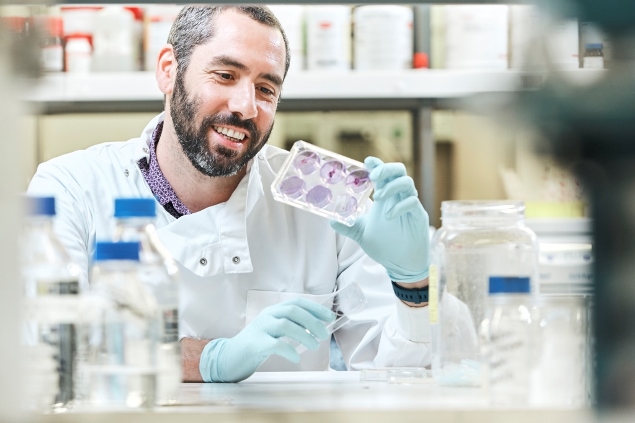
Case Study
Innovative technology for human joint repair
Date: March 11, 2019
A key element of the IKC’s work focuses on supporting research to improve the successful integration of implants in the body. A particular emphasis is on composite tissues – a combination of soft tissue such as tendons and the bone to which it is attached.
Underpinning these projects is a novel technique, developed at the University of Leeds, to ‘decellularise’ donated tissue – removing cellular and DNA material to reduce the chances of rejection and allow the implant to support the growth of new tissue using the patient’s own cells.
The technology was developed by Professor Eileen Ingham’s team in the Institute for Medical & Biological Engineering and commercialised through the spin-out company, Tissue Regenix, as dCELL®. Originally designed to repair heart valve tissue, the technique has been modified for different tissue types to help patients with a range of conditions and needs.
The IKC has supported research, in collaboration with NHS Blood and Transplant Tissue and Eye Services (NHSBT TES), into a human bone-patellar tendon-bone implant to repair anterior cruciate ligament damage, which has been tested successfully in sheep. Alongside this, Professor Ingham has been testing a process developed by NHSBT TES for reducing the risk of infection by sterilising the implant materials, also supported by the IKC.
The team’s interdisciplinary knowledge is the secret to its success. There are few groups in the field of regenerative medicine that combine physics and engineering with biology and immunology – and the ability to test both the biomechanical properties and biological compatibility of the tissues has produced rich results.
Since the original decellularisation patent in 2001, further patents have been granted for meniscus, bladder and artery tissue, which require additional steps in the process.
Professor Ingham explains: “Heart valve tissue is relatively thin and we’ve found our method works well on thin tissues like pericardium and amnion but it’s harder to decellularise thick tissue. The bladder when relaxed is very thick and muscular, so we needed to add in an additional trick. The secret is to stretch it like a balloon before the decellularisation process.”
That process of stretching and decellularising bladder tissue, which was developed in collaboration with Professor Jenny Southgate at the University of York, also shows huge promise for developing patches that can increase bladder capacity for patients who have bladder disease or dysfunction. Current solutions use a patient’s own intestinal tissue which carries risks of infection and bladder stone formation in addition to unknown cellular effects over time. Ramnath Subramaniam, a consultant paediatric urologist at the University of Leeds, is keen to find alternative ways of enlarging the bladder.
Mr Subramaniam is collaborating on a project led by Professor Southgate working with porcine acellular bladder matrix (PACM) and investigating how well the material integrates with the mucosa of the bladder inner lining. Although only working with small patches at the moment, the results are positive. “We are seeing the acellular matrices become cellularised and integrated and in our tests we aren’t finding the complications reported in previous clinical work in the field. The method is amazingly promising and we want to move forward with a human bladder matrix equivalent and to test the human aspect of this,” he says.
Back to Case Studies
